In the north east of Poland you will discover a region of 2000 lakes known as Musuria. This is Poland’s Lake District and in its heart is Giżycko. In this blog we share our 10 must see spots that make this lakeside town very special.
This article is also featured on GPSmyCity. To download this article for offline reading or create a self-guided walking tour to visit the attractions highlighted in this article, go to Walking Tours and Articles in Gizycko.
The Lakes – a quick snapshot
The Masurian Lakes are a very special part of a country that is beginning to defy old communist style perceptions. Poland is a diverse, beautiful and profoundly scarred nation that stands firm in its independence, unity and strength against its war time persecution. Whilst the memories may well be fading, Poland now puts its energy into more positive, future building and it is starting to pique people’s interest. Heading east is not the fearful prospect it once was.
The Masury Lakes is an area of 20,000 square miles, that is filled with forest, lakes and picturesque towns that each hold their own bit of history, dating back to the Teutonic era. Castles, boat trips, canalside walks and marinas all feature in this vast and beautiful land. Undulating landscape, tree-lined roads and a patchwork quilt of farmers’ fields full of golden corner and maize, all grace this secret corner of Poland.
Created by glaciers from the last Ice Age, these lakes have a special quality to them, despite their sometimes commercial feel as the wake from the boats lap against the reed filled shores. And what makes them special? The fact that they are hidden pearls in Poland’s crown, which seemingly does not attract too many foreign visitors. You will encounter locals, vivacious shopkeepers and an authentic corner of Poland where English is rarely a second language. May be if you are lucky a bit of German can get you by. We love these genuine pockets of a country that has been able to protect their national heritage and keep their roots strong. The local towns, built upon the lake shores cater for every need from hotels, to places to camp overnight and water-based activities each with their own tales to tell. One of our favourite places was Giżycko in north eastern reaches of the Lakes. Let us show you the reasons you need to visit this place that can easily be navigated on foot or with bikes.
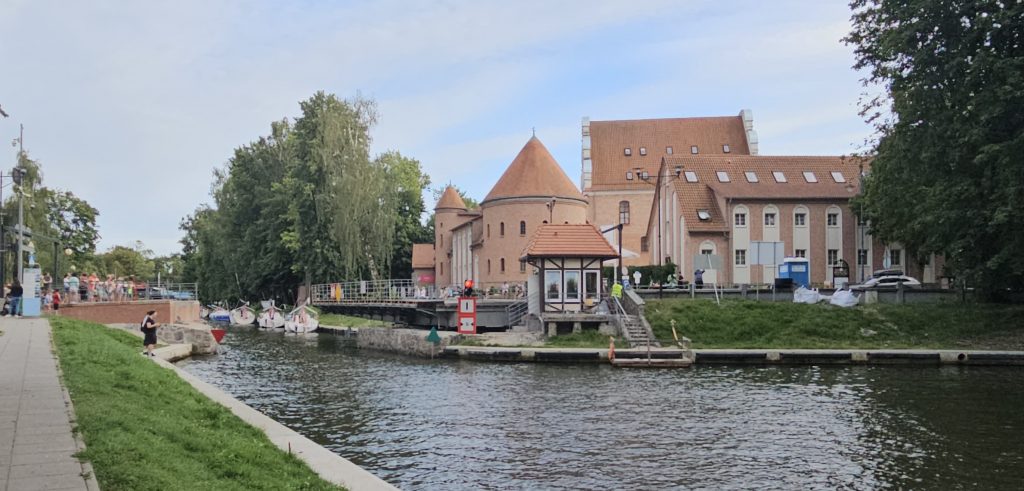
Giżycko backstory
As with many places in Europe, there is evidence of a Roman settlement. However the evolution of the town as we see it today is predominantly shaped around the construction of the castle in 1340. Built by the Teutonic Order of Brothers who were a German group of missionaries who sought to look after the needs of Christian pilgrims, Lötzen as it was known back then, received town privileges and their own coat of arms in 1612. In 1709, the plague hit the town with 800 people dying of the disease, leaving only 119 to rebuild their town. Yet more disaster befell Lötzen; in 1822, after the Napoleonic Wars, the town was hit by fire and famine. In 1844 the Boyen Fortress was built and it played a key role in WW1, although during WW2, it was the site of a military hospital and home to the German Intelligence Service. A strategic move no doubt, given Hilter’s secret Bunker at Wolf’s Lair in Gierłoz just 11km to the north. After battles of ownership for much of the area, in 1946 Lötzen was renamed Giżycko, in honour of an Evangelical pastor and folklorist known to support Polish culture.
Giżycko straddles two lakes; Niegocin and Kisajon which gives its modern day evolution a real boost, attracting water-lovers from across Poland. The 19th century canal that connects both lakes was historically strategic and today a magnetic for those looking to enjoy all the attractions the water has to offer.
Check out our vlog from our two days exploring this lovely town in the heartland of Mazury.
Giżycko – Top 10 things you can’t miss
There are so many great things to explore in Giżycko, here are the 10 Best Bits that we uncovered, bringing together a blend of historical, spiritual and natural charm that you simply can’t miss whilst you’re here.
- The Swing Bridge
The bridge in itself might look like just any other road infrastructure across a canal, although it has more depth to it than that. Firstly the drawbridge that was constructed alongside the Teutonic Castle, (which is now the St Bruno Castle) collapsed. So a new one was designed and put in place in 1889. It was always intended for the bridge to be manually operated although in 1960, there was an attempt to make the mechanism electronic. This sadly failed and the bridge sustained a lot of damage. A military bridge overlaid the damaged one, and it was only in 1993 that the current structure reopened. And to this day it is still operated by hand. It is one of the only remaining bridges of its kind in Europe and the only one still in use in Poland. The bridge is shut for certain periods of the day to allow the boats to pass between Lake Niegocin and Kisjano and this can be up to an hour. You can still get across the canal via the alternative footbridge just 300m away or via the main road just a five minute’s drive away. Bear in mind if you are driving this way there is a 1.3m height restriction and a 2.5T weight limit.
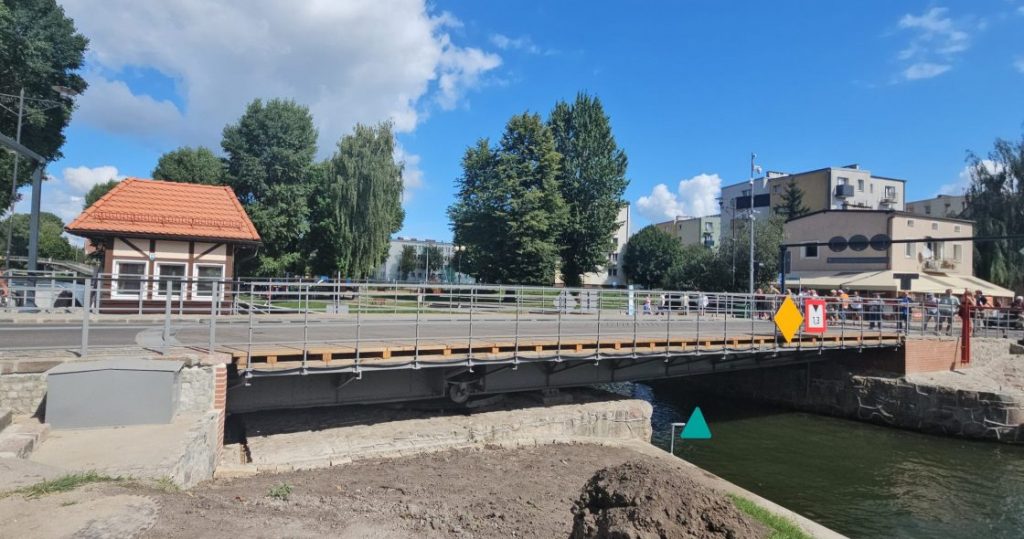
- St Bruno’s Hotel and old Teutonic Castle
Just by looking at it, you can tell that this fine structure was once a grand castle. And yet this is a much renovated building that has changed its personality and character over the centuries. Today’s romantic looking structure is built upon the grounds of the original castle, which was constructed in the mid 14th century by the Knights of the Teutonic Order. Its purpose, despite what its strategic position suggests, was a prosecutor’s castle playing a judicial and administrative role. During the centuries, St Bruno’s castle has evolved from a hunting lodge to today’s historic hotel where luxury meets history. It has a fitting and commanding presence on the banks of Canal Giżycki and inside has a very ornate and pleasant feel to it. It is adjoining the castle where you can find the marina campsite, if this is your intended destination.
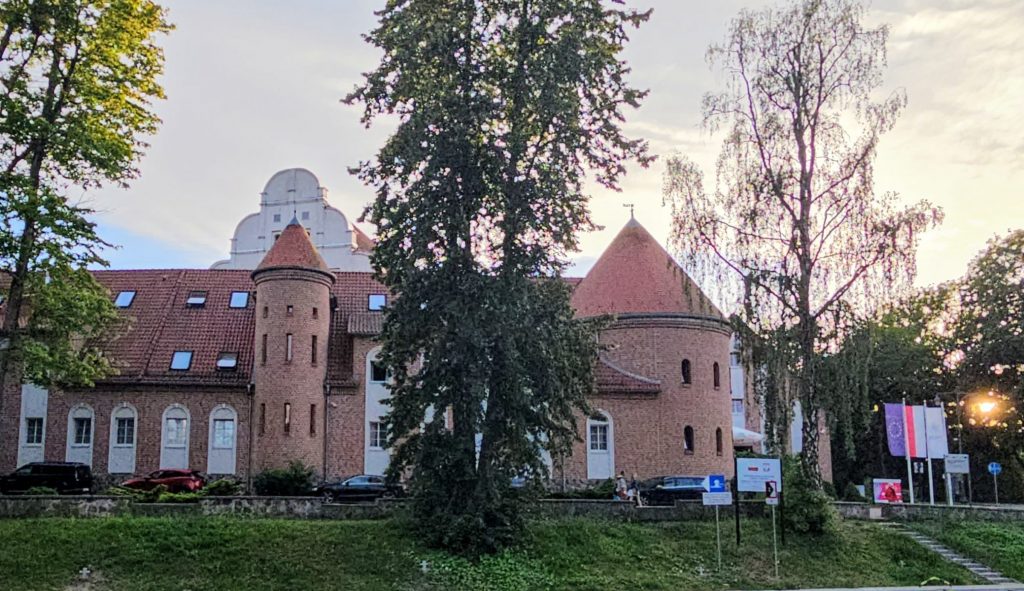
- Boyen Fortress
A five minute’s walk away from the Swing Bridge and hotel, you reach the Boyen Fortress. This Star Fortress is one of Poland’s most important strongholds and was built during the Prussian era to protect its borders against Russia. Building work started around 1844 and was named after the Minister of Defence, Hermann von Boyen. During WW1, it played a strategic role in supporting the German army during the Battle of Tannenberg, and during WW2, its role was a military hospital and home to the German Intelligence Service.
The entrance fee is 25zł per person (around £5 each) and there are three different walks you can do around the walls of the fortress. The blue route has gentle paths and no steps to climb and will take around an hour. The red route has some steep paths and steps and will take around 90 minutes. And finally, the green route is a two hour expedition that again takes you up steep steps and climbs on the upper walls of the fortress. It’s a fascinating place where, these days nature is taking a commanding role in the shape of the fortress. Although work is being done to preserve the fortress and create museums and exhibitions for visitors.
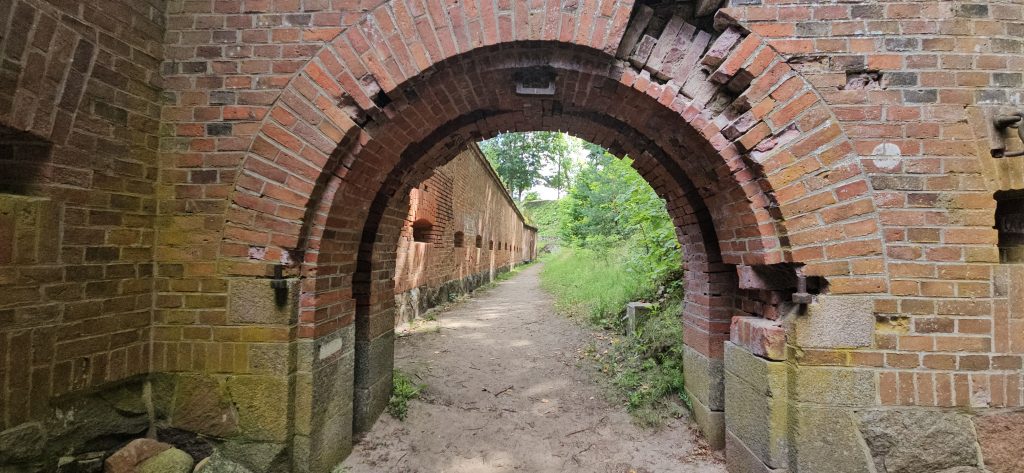
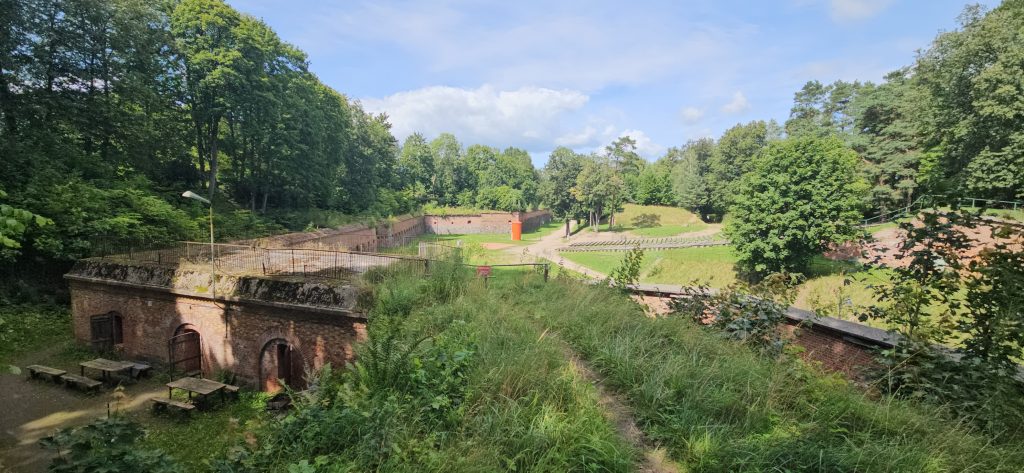
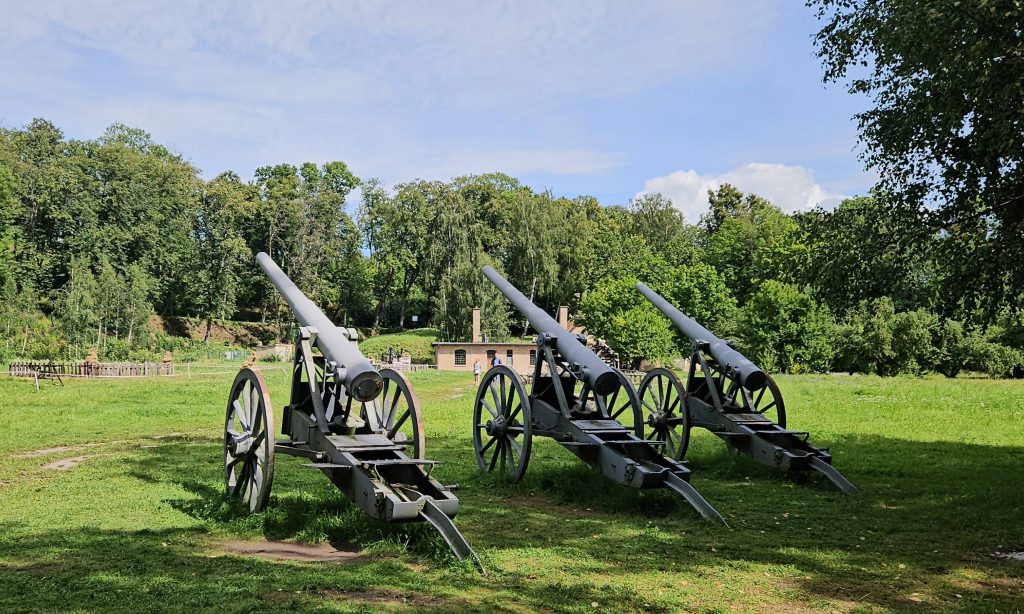
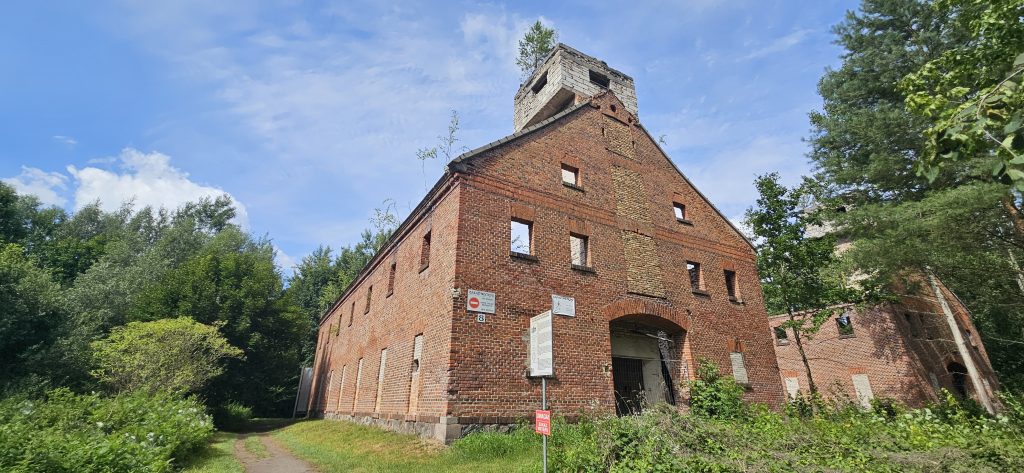
- Observation Tower and the Cross of St Bruno
Whilst you’re close to the Boyen Fortress it is worth taking a slight deviation to the 15m tall Observation Tower and Cross of St Bruno. Placed perfectly on the shores of Lake Niegocin, the tower has 80 steps to its viewing platform, which gives gorgeous views across the Masurian region. Built in 2023, it was part of a project to revitalise St Bruno’s Hill enhancing its draw for tourists, whilst melding into the forests around it and the spirituality of the Hill. Ideally visit during a sunrise or early morning when the light is quite special.
St Bruno of Querfurt is an important figure in Giżycko’s history and identity. He was a missionary who was martyred at the Hill in 1009 during his mission to bring Christianity to the area. In line with tradition, a cast iron cross stands on the Hill, erected in 1910 to commentate the 900th anniversary of his death. Whilst the area is perfectly shaped for bird watching, walking and cycling, St Bruno’s Hill will always remain a spiritual place for the locals.
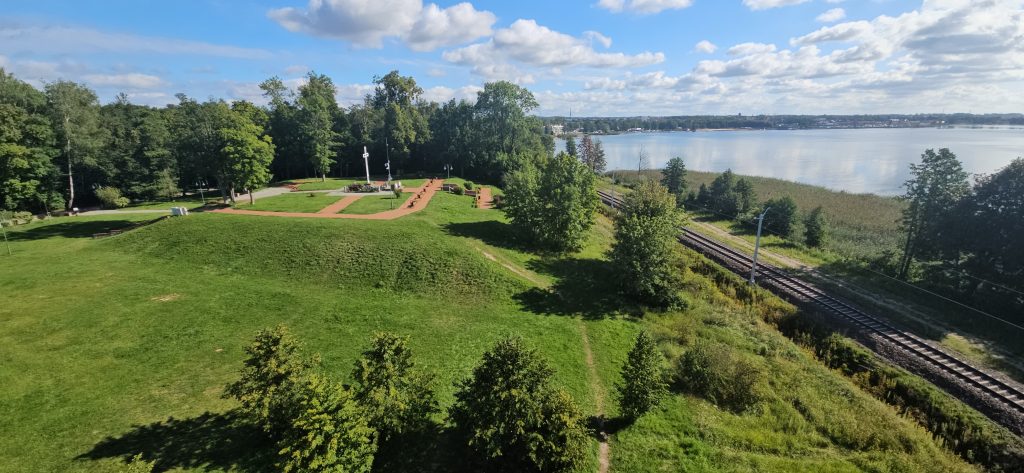
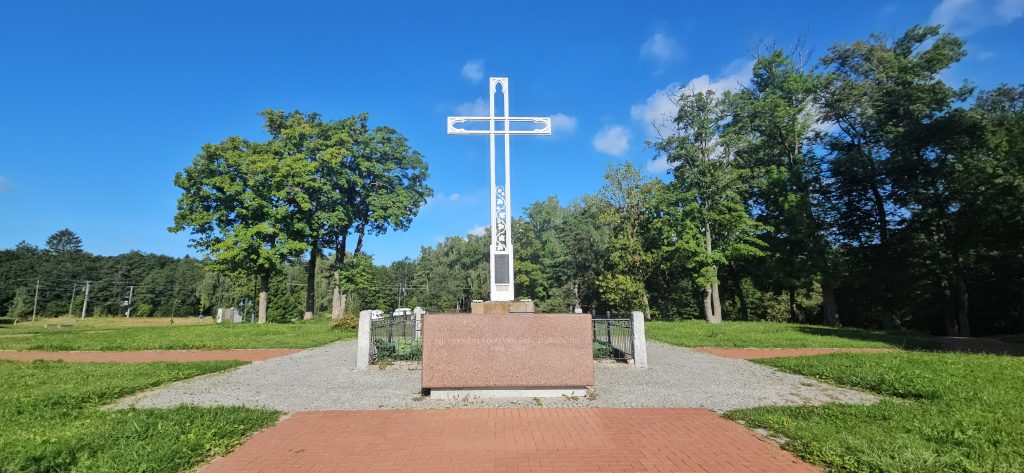
- Way of St James to Santiago de Compestella
If a pilgrimage is at your heart, then you can following the Way of St James from St Bruno Street, across to Giżycko island and onto through to Santiago de Compestella in Spain. As you come back from St Bruno’s Hill, you will see the path back to the town has way marker Crosses along the one mile stretch adding to the spirituality of the area and the town itself.
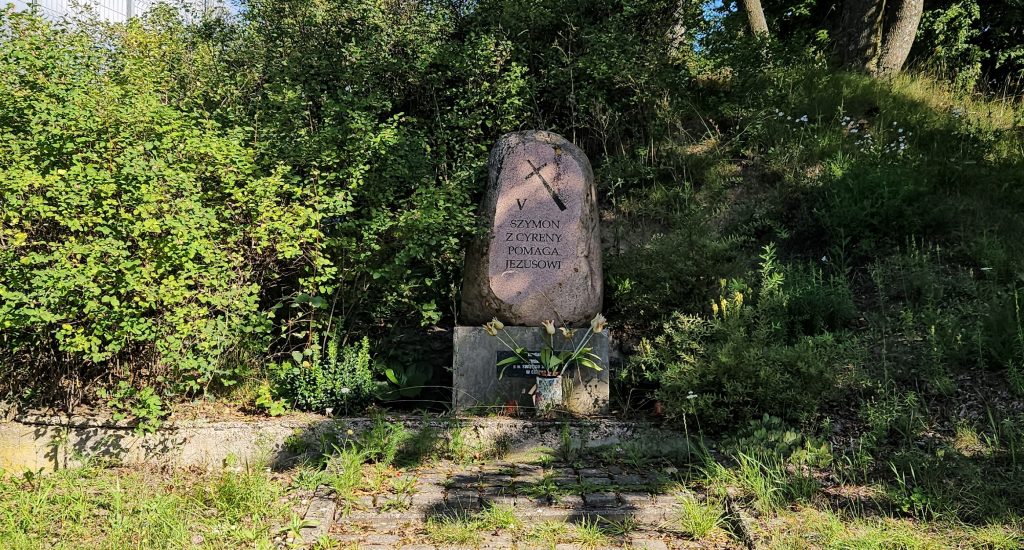
- A Walk along the Giżycki Canal and its footbridge
The 2.13km canal, better known in Polish as Łuczański Canal is a beautiful environment to walk, cycle or just simply be. The canal was built in 1765 and 1772, linking the two lakes, Kisajno and Niegocin allowing commercial boats to travel between the two. Crossing the footbridge when the Swing Bridge is shut, gives you a beautiful vantage point of the canal and the castle hotel in the distance.
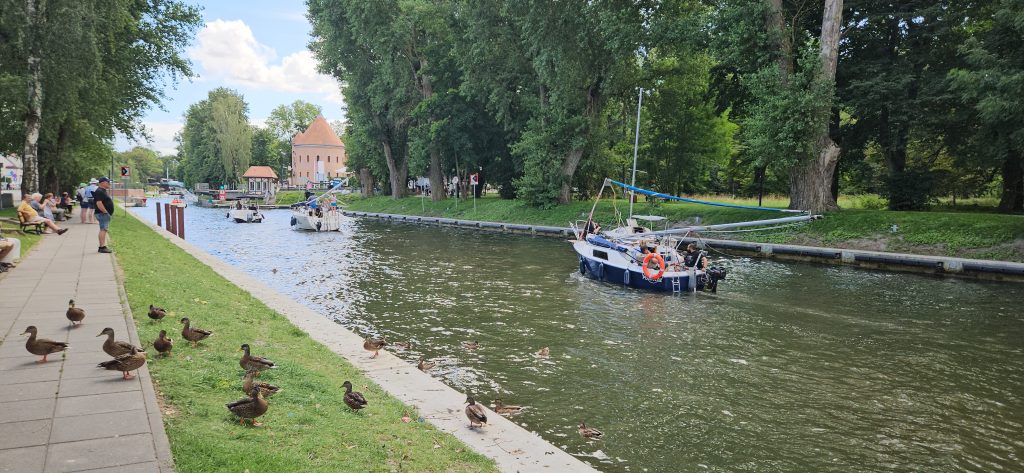
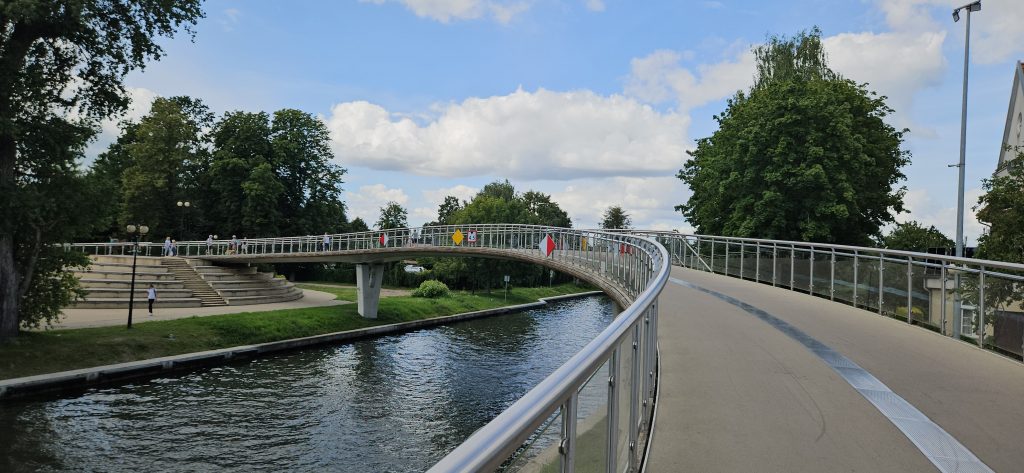
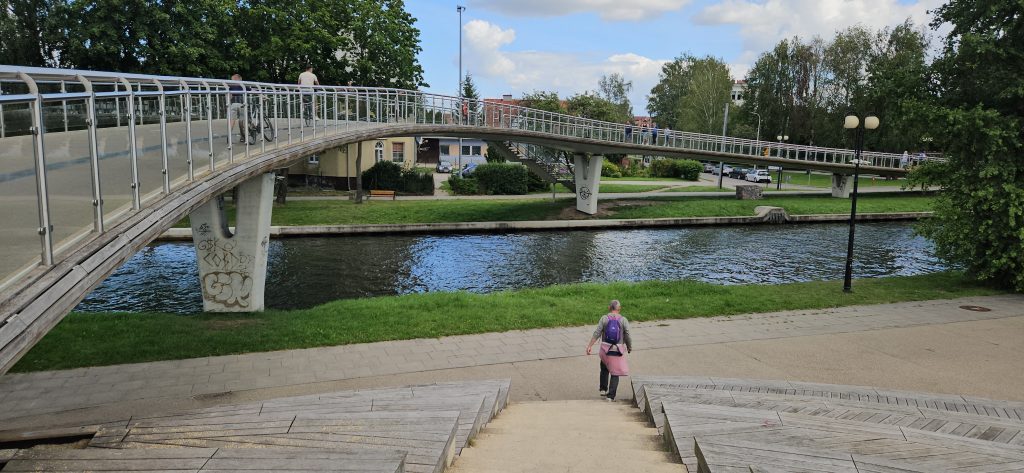
- Marina and Beach along Niegocin Lake
Heading down along the canal opposite the hotel, you get a perfect view of the marina campsite that we stayed at. Walking along beneath the railway, that we never saw being used, for trains at least, you come to the slightly more commercialised part of the town. Restaurants line the canal and the marina draws you through the gauntlet of ticky tacky stalls hoping for a tourist sale. It’s not long however, before you reach the sands of Giżycko Beach on the shores of the lake. A popular place for locals to hang out and take the obligatory picture with the town’s sign. If you fancy just a bit of down time or a quick swim, then this is your place. Otherwise keep on trucking towards the Pier and yellow footbridge.
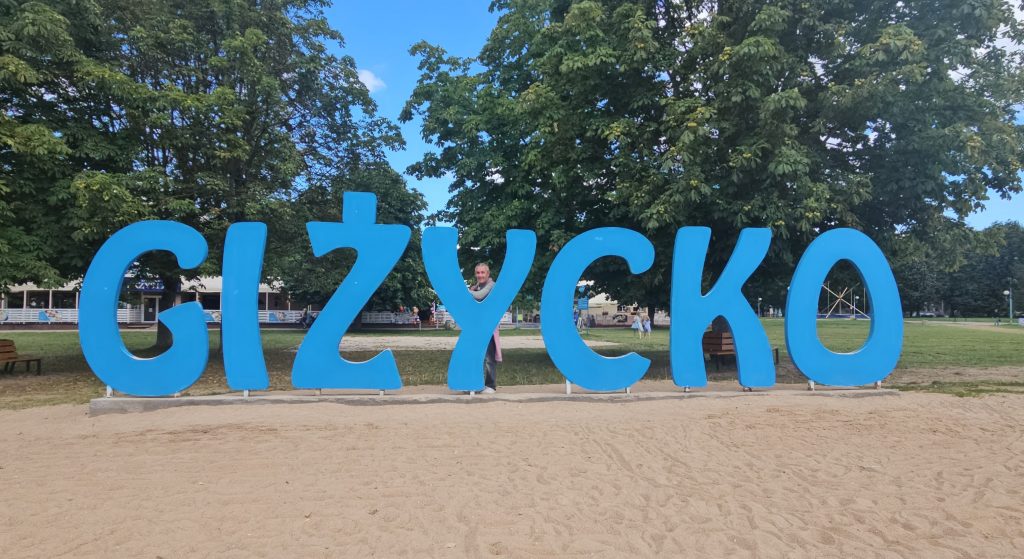
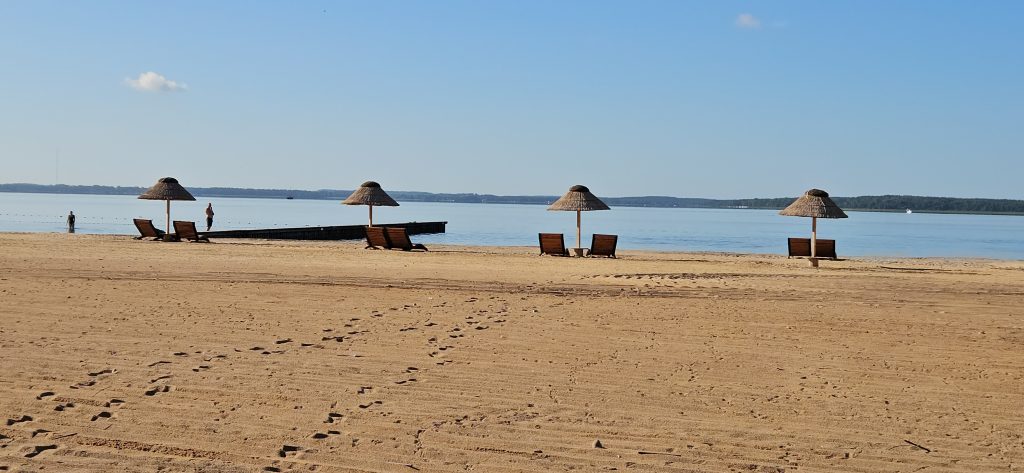
- Giżycko’s Pier
Just imagine an early morning rise to walk along the deserted beach, watching the silence that emanates from the lake’s surface. A tranquility that you cannot buy. No morning sellers touting for your business, no smells coming from the street food sellers. Just you, along with early rising joggers who simiarly wish to enjoy the peace of the city and the sunrise.
Giżycko’s 71.2m Pier was originally built in 1970 although was renovated in 2011. You can access this via steps if you wish or via the lifts on the footbridge, allowing everyone, of every mobility to access this peaceful place. The reflections, as you reach the end point are magical, and the stillness from the lake quite mesmerising. As you turn to look the at the city, you can appreciate the full shape and urbanscape in front of you. This is definitely a place to come at sunrise or sunset if you can. It’s a very special place.
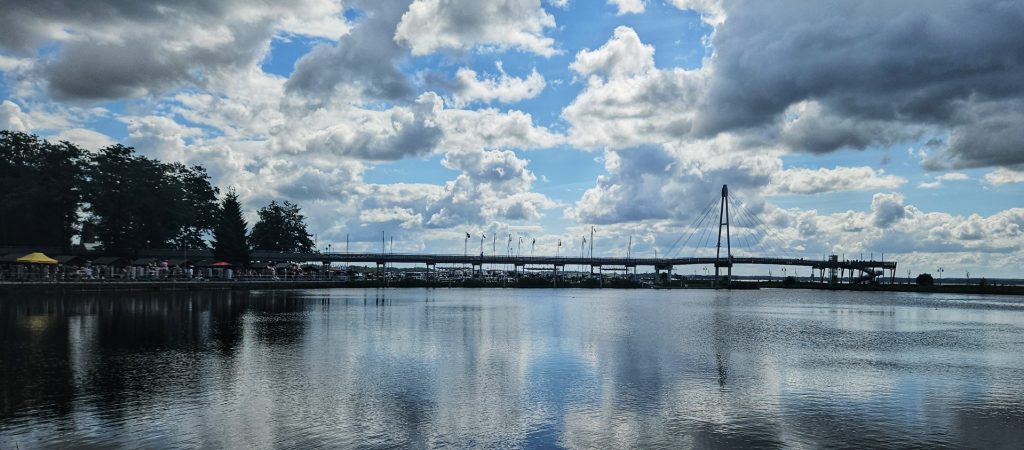
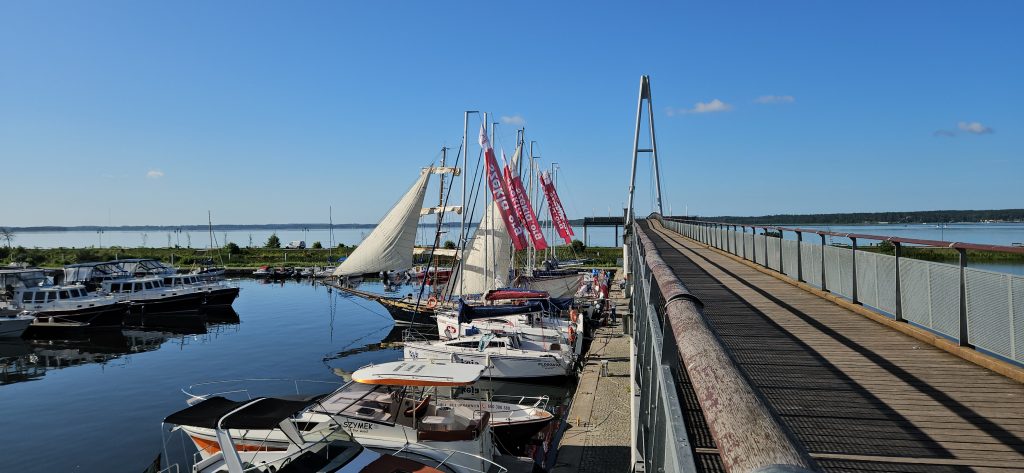
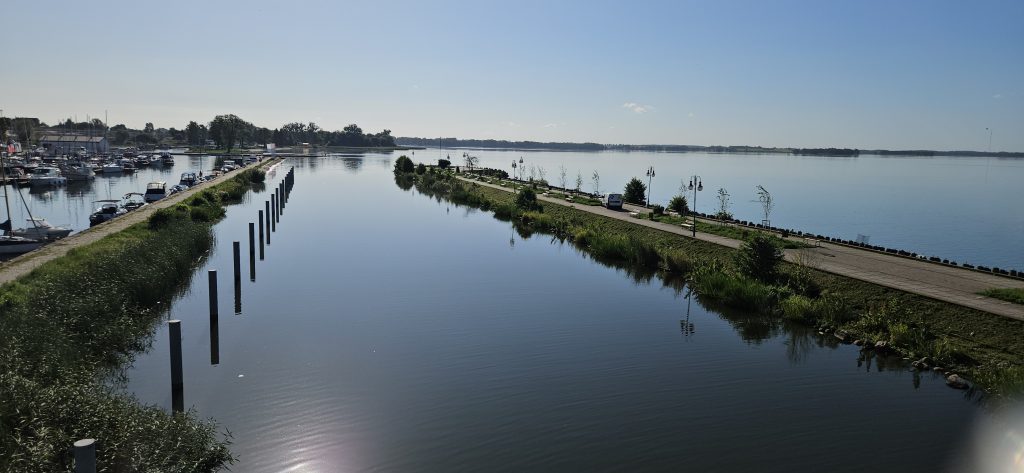
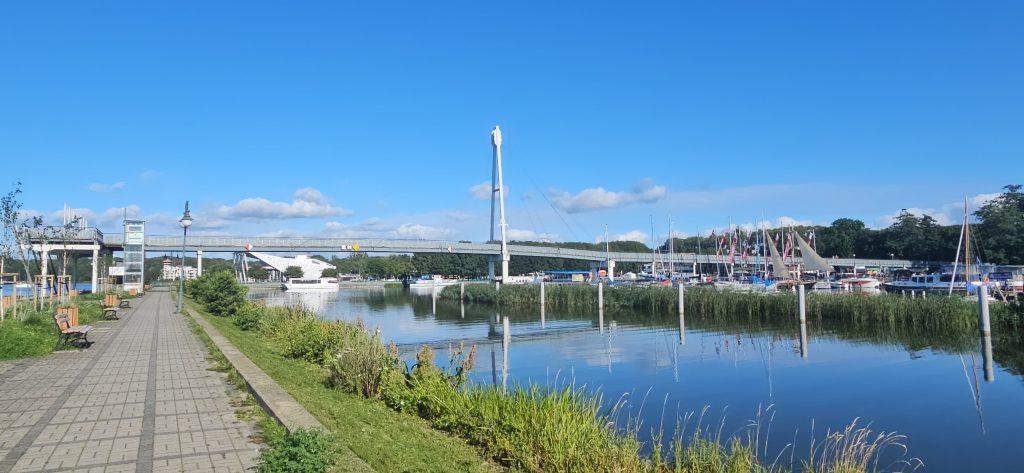
- The Water Tower Cafe and Museum
Heading up through the town to the eastern reaches, you cannot ignore the towering beacon in front of you. The Water Tower has its very own character and story that cannot be missed during a visit to Giżycko. Just a 10 minute walk from the Pier and you will arrive at this 162m red-bricked tower that rises from the earth like a giant. It commands the most magnificent views across the town, and is well worth the 20zł per person it costs to enter the tower. The most important thing to note is this has a multitude of reasons for your visit. First is the museum that on each floor of the tower gives you a perspective of life in the Lakes. Secondly is the delightful café at the top, with their delicious cakes. And finally the views from the top are just wonderful. If walking up the 162 spiral steps doesn’t suit you, then there is a lift taking you to the top, although don’t miss the museum on each of the floors. This is a lovely piece of preserved history that you cannot miss.
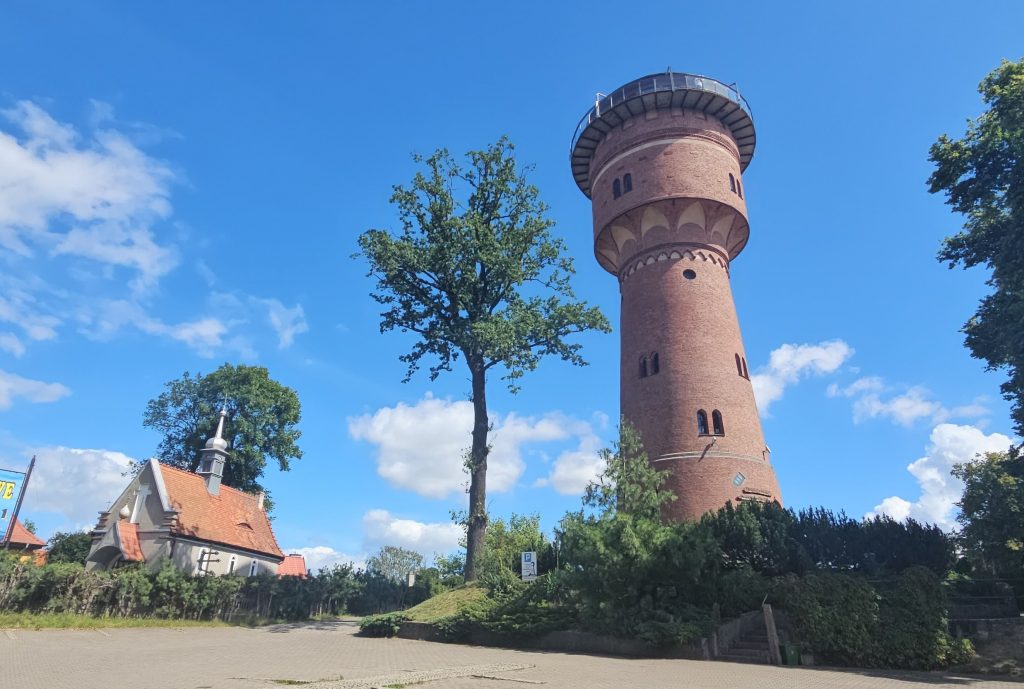
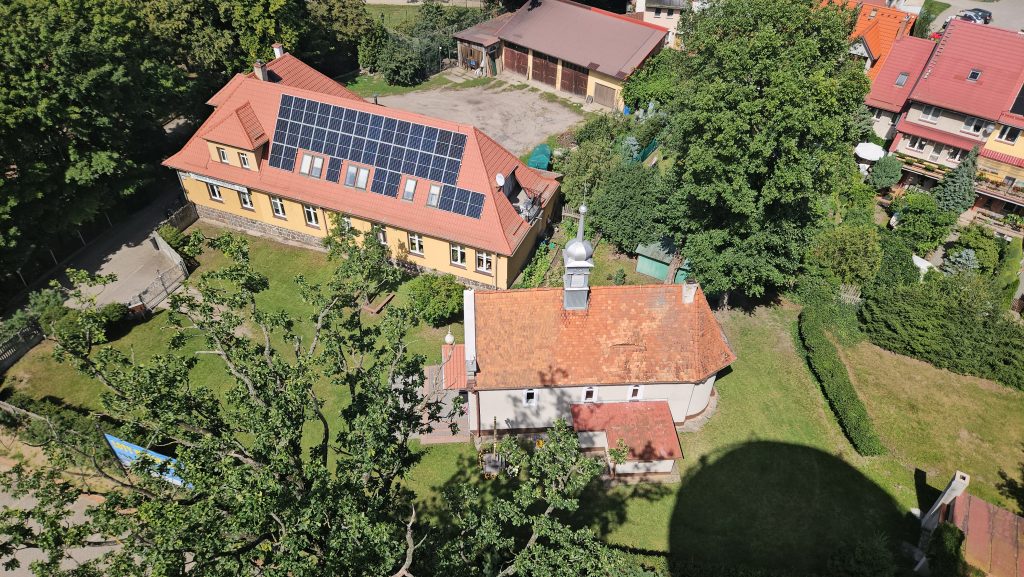
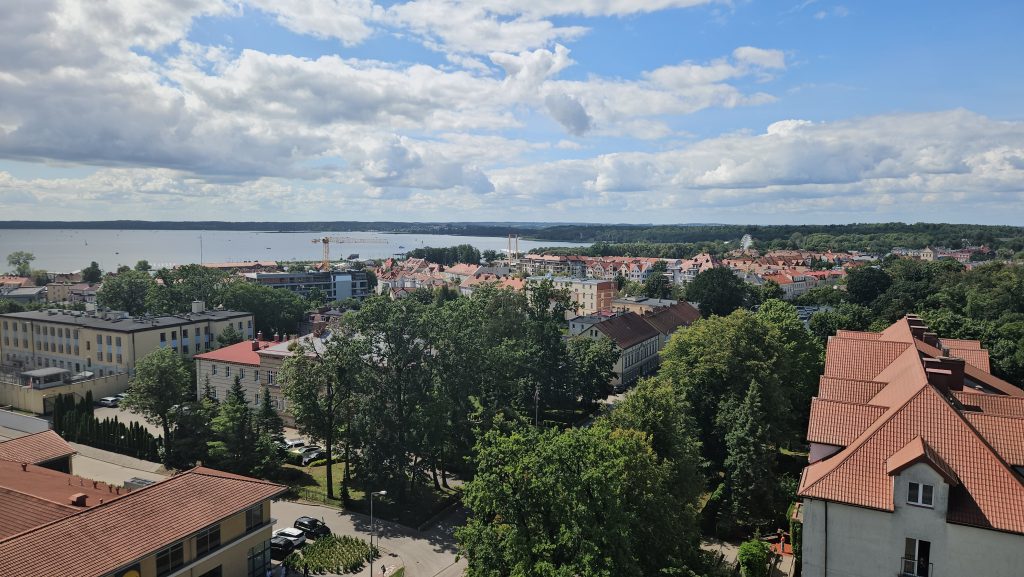
- The Oldest Building in Giżycko and the Evangelical Church
After the heady heights of the Water Tower, we head back into the main town, which is a buzz of cafés and shops. It is hard to imagine how the town was before the fire of 1822, which destroyed much of the city. However there is one building that was built in the middle of the 19th century that gives you a clue to the roots of the city. On the right-hand side of the road as you head back towards the canal, we found the Regelski Bakery. It is one of the oldest buildings in Giżycko and has a unique design using, what is described as a Prussian Wall method. It is a building that sinks into its surroundings so, was it not for the board outside of it, it would be easy to miss.
Just down the road on the left, we find the neoclassical Evangelical Church, which is a bit of a landmark for the town. It was built in 1826 by the greatest 19th century German architect Carl Schinkel. The church is best known for its organ recitals, which attract people from all over. The altar has a collection of paintings from a well known artist from Berlin.
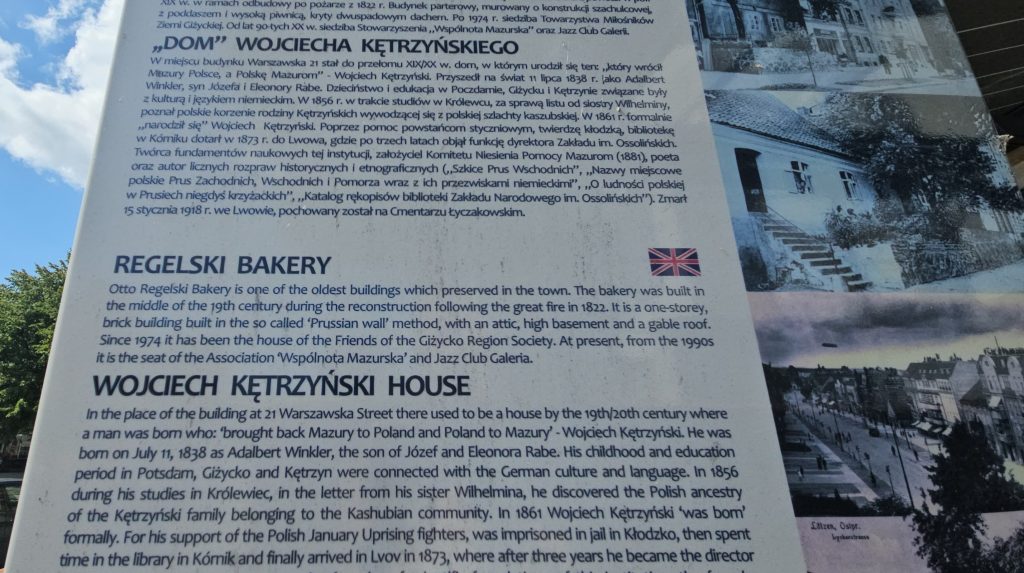
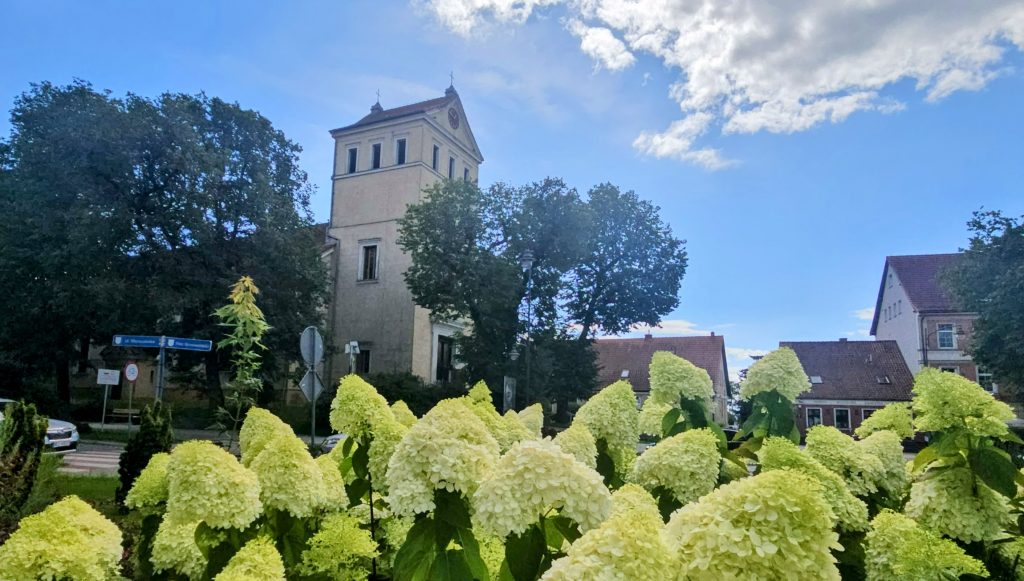
And there you have it. In a flash we have delved deep into the heart of this important Masurian Lake town and got under the skin of its charm. Giżycko is a town that is so much more than the sum of its beaches, expensive boats and tourist shops. It is easy to get into the real soul of this town by just wandering around its streets, and we really hope that you’ve enjoyed touring around with us.
For more Poland inspiration check out either our free to download ebook that follows our tours around the whole country, or check out our Poland dedicated blog page.

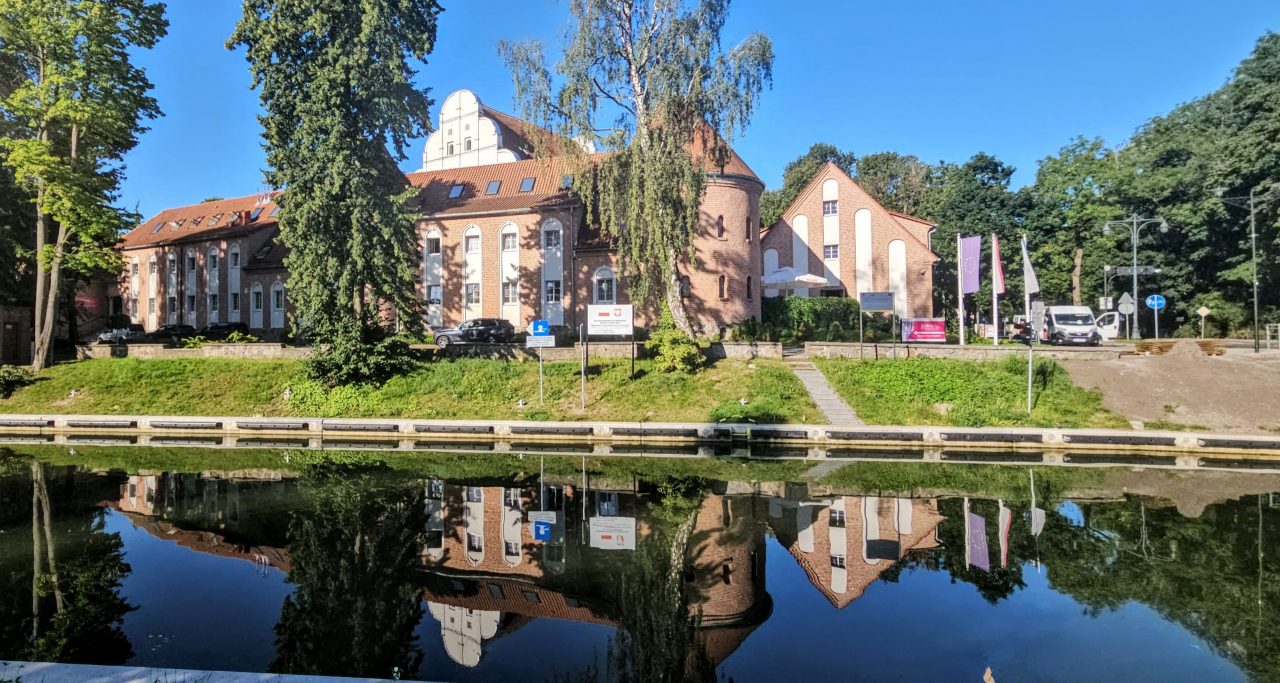
0 Comments